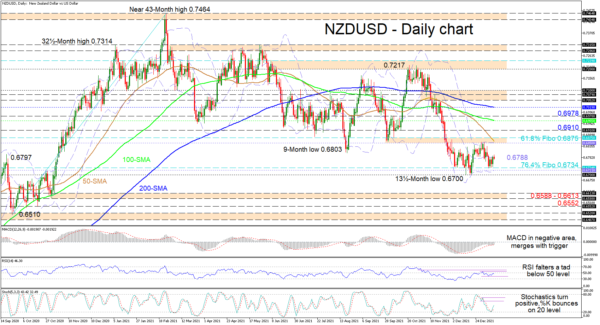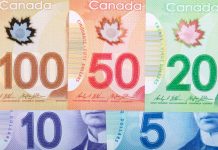NZDUSD has been consolidating for around one-month now as downward pressures diminished after recording a 13½-month low of 0.6700. The pair has been finding support lately from the lower Bollinger band and the 0.6734 level, which is the 76.4% Fibonacci retracement of the up leg from 0.6510 until 0.7464, even though the SMAs continue to endorse a bearish trend.
The short-term oscillators are conveying mixed signals in directional impetus. The MACD, slightly beneath the zero mark, has returned lower to its red trigger line showing that sellers are still present. The RSI has dipped in the bearish region, suggesting negative forces have yet to fully subside. However, the positively charged stochastic oscillator is implying that buying interest may pick up.
If the price oversteps the mid-Bollinger band at 0.6788, buyers may face a reinforced ceiling linked to the recent consolidation, moulded between the upper Bollinger band at 0.6850 and the 61.8% Fibo of 0.6875. Clearing this, buyers could tackle the nearby 0.6910 obstacle before eyeing the 100-day SMA at 0.6955. Should the pair continue to recoup lost ground, a push past the neighbouring 0.6978 barrier could encourage the bulls to aim for the 200-day SMA at 0.7019.
Otherwise, if the mid-Bollinger band impedes hikes in the pair, initial support may originate around the 76.4% Fibo of 0.6734 and the lower Bollinger band at 0.6721 before sellers challenge the 13½-month low of 0.6700. Should the decline resume, the 0.6588-0.6613 support band created in November 2020 could come into play ahead of the 0.6552 barrier.
Summarizing, NZDUSD is currently stuck in a sideways market between the lower limit of 0.6700-0.6734 and the upper limit of 0.6850-0.6875. That said, the neutral-to-bearish mood is active and a price climb above 0.7100 would be needed to reinstate optimism in the pair.














